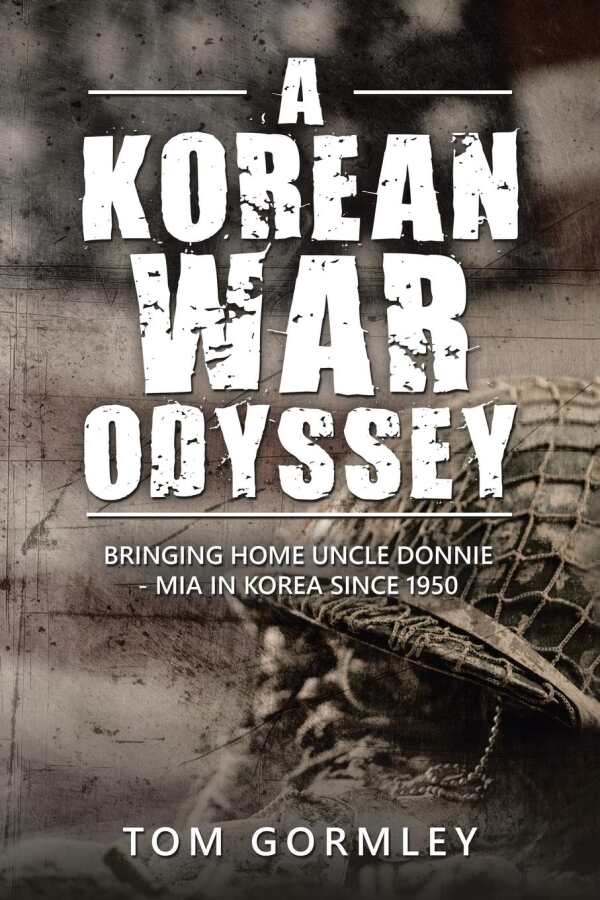It looks like you've stumbled upon a page meant to be read by our code instead of viewed directly. You're probably looking for this page.
A Korean War Odyssey
Bringing Home Uncle Donnie---MIA in Korea since 1950
A Korean War Odyssey is both a moving tribute to a lost family member and a deft microhistory of the war that helped to preserve South Korea’s sovereignty.
Part history lesson, part family story, Tom Gormley’s memoir A Korean War Odyssey is about a quest to find out what happened to a relative during the Korean War.
Prior to Tom and Sandy Gormley’s research, the couple knew Sandy’s uncle, Donald Matley, most in terms of a photograph: a picture of a skinny, red-haired eighteen-year-old in an army uniform that sat on a shelf in Sandy’s mother’s kitchen. They knew that he had been listed as MIA, and that efforts were still underway to find and identify the missing. In 2010, the couple attended a POW/MIA briefing near Washington, DC, that detailed such efforts. Their curiosity about Donald inspired years of investigation into his role in the Korean War, the manner of his death, and the location of his remains. Their digging paid off.
The short chapters are smartly arranged; they alternate between information about the war itself, and particularly Donald’s activities as a mortarman with the Nineteenth Infantry, and the couple’s efforts to find information about him. Included in this chapter rotation is the story of Kyu, a fictional South Korean farmer and his family; Kyu takes flight, with hundreds of thousands of countrymen, as the ruthless North Korean troops advance to the south. Their journey takes place during the early months of the war in which Donald went missing; in that Kyu and his family are represented as typical South Korean refugees, their story contributes to the Gormleys’ hunger to understand the foreign war and the reasons for US intervention.
Attention to detail, and meticulous documentation and record keeping, are evident throughout. The book is preceded by a map of the war zone and a dated chapter list. At its end, a bibliography, an index, and an informative list of important characters are included. Dates mark events, documents, and correspondence; often, photographs of letters and characters are provided. Some of these details are drawn from the firsthand accounts of veterans regarding the battles which Donald fought in. Combined, these features ensure credibility and support a clear picture of the progression of the war, Donald’s movements in it, and the cost in human lives.
The book’s descriptions of the process of locating and identifying Donald’s remains is just one example of the combination of luck, attention to detail, and dogged determination that marked the couple’s research efforts. Evidence of an important clue for the identification of Donald’s remains comes in the form of a dental record dating back to 1946. A climactic, bittersweet ending provides closure—for Donald’s family, the war, and the book—as the remains of the fallen soldier are brought home to for burial amid attention from media and well-wishers.
In addition to serving as a tribute to a lost family member, A Korean War Odyssey is a microhistory of the war that helped to preserve South Korea’s sovereignty.
Reviewed by
Joe Taylor
Disclosure: This article is not an endorsement, but a review. The publisher of this book provided free copies of the book and paid a small fee to have their book reviewed by a professional reviewer. Foreword Reviews and Clarion Reviews make no guarantee that the publisher will receive a positive review. Foreword Magazine, Inc. is disclosing this in accordance with the Federal Trade Commission’s 16 CFR, Part 255.
